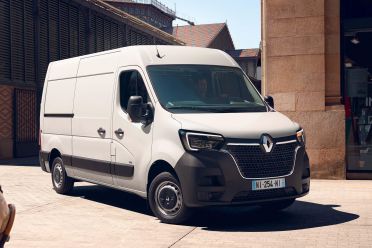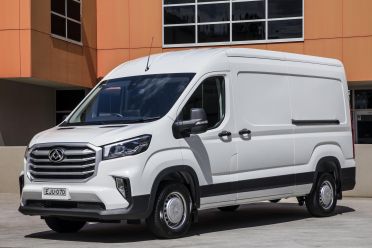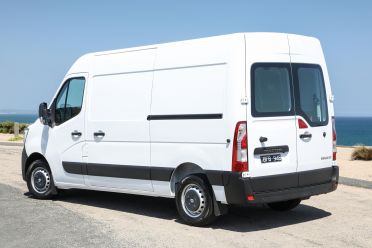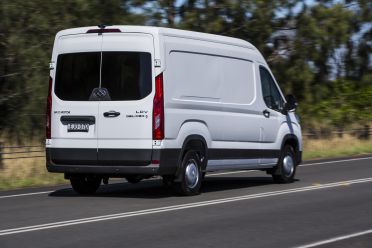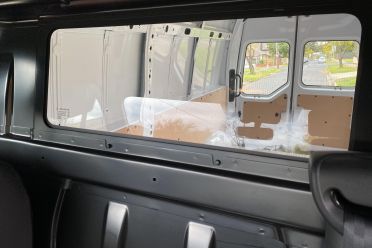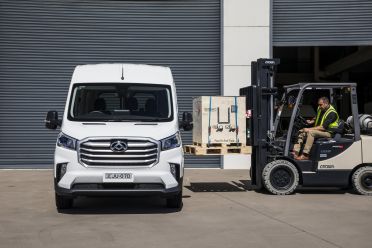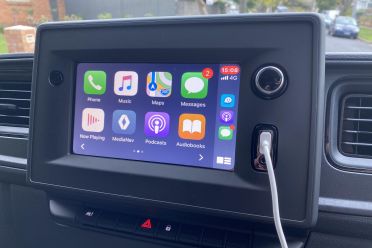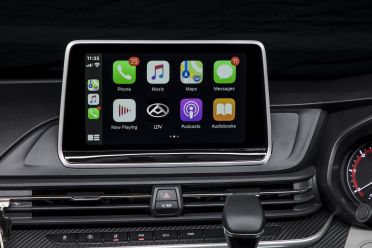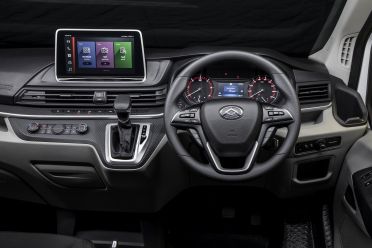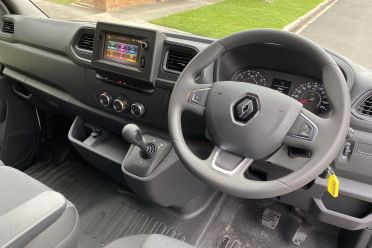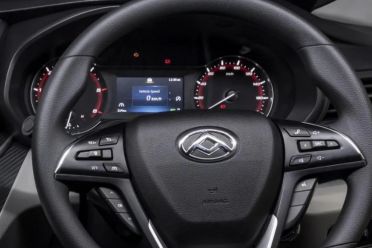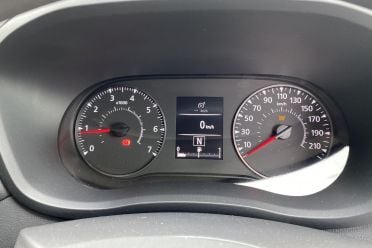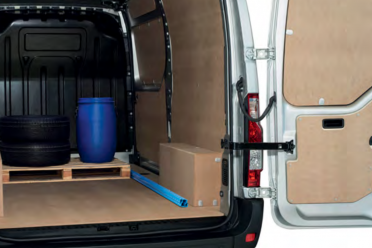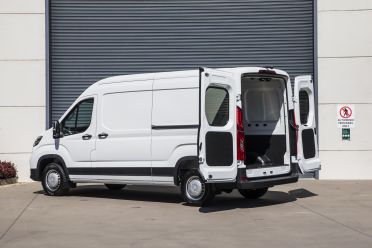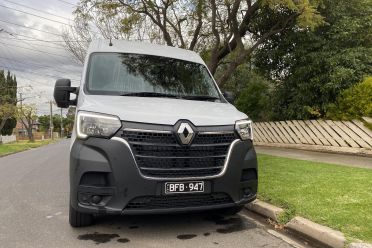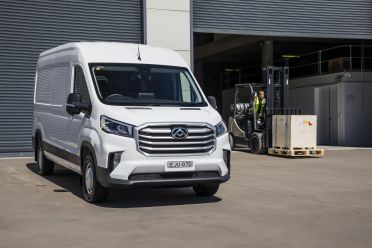China’s LDV is expanding its Australian operations swiftly. First it was the G10 van and people-mover, then the T60 ute, and now the Deliver 9 large van has arrived to tackle to establishment.
Where the G10 competes with the Renault Trafic, Mitsubishi Express, Toyota HiAce and company, the Deliver 9 is larger and squares off against the top-selling Mercedes-Benz Sprinter, plus the Volkswagen Crafter, Ford Transit, and Volkswagen Crafter.
But perhaps its closest competitor among fleet buyers keeping an eye on the bottom line is the Renault Master, which like the LDV attracts customers with keen pricing for the cargo space offered.
Obviously the preference is always to do proper comparison testing, but while we work to make that happen, this specs-based piece breaks down whether the new contender represents good value or not.
Prices
The LDV and Renault both come in cab-chassis, cargo van and light bus forms. They’re offered in various wheelbase lengths and with multiple roof heights.
The two that square off best against each other are the entry grade Deliver 9 MWB (short for mid-wheelbase) at a price of $43,148 drive-away, and the Master MWB at a price of $50,990 drive-away for ABN holders or $55,000 for private buyers.
Because the LDV is automatic-only, I’ve selected the Renault with an auto as well, though the manual kicks off at $48,990 drive-away.
The Master also comes in a SWB (short wheelbase) guise priced from $44,990 before on-roads, but this model is nearly 500mm shorter than the LDV so doesn’t line up as well.
Drivetrains
The LDV’s diesel engine has a 2.0-litre capacity and four cylinders, and produces 110kW of power and 375Nm of torque. It’s rear-wheel drive (RWD) through a six-speed auto. The fuel tank is 80 litres and the rated towing capacity is 2.8 tonnes.
The Renault’s 2.3-litre four-cylinder diesel engine produces 110kW of power and 350Nm of torque when mated to a six-speed AMT (automated manual transmission, with two pedals) and front-wheel drive (FWD). The fuel tank is 100L and the tow rating is 2.5 tonnes.
Strangely, if you opt for the six-speed manual Master the engine gets a second turbocharger (active at lower engine speeds), stop/start, and uprated outputs of 120kW/360Nm.
| LDV Deliver 9 MWB | Renault Master MWB | |
|---|---|---|
| Engine | 2.0-litre diesel | 2.3-litre diesel |
| Power | 110kW @ 3500rpm | 110kW @ 3500rpm |
| Torque | 375Nm @ 1500rpm | 350Nm @ 1500rpm |
| Towing capacity | 2800kg | 2500kg |
| Transmissions | 6-speed auto | 6-speed AMT |
| Driven wheels | Rear | Front |
| Fuel tank | 80L | 100L |
Capacities
These are the two versions that are most similar in overall size. The LDV is 29mm shorter, 56mm taller and 4mm narrower than the Renault.
Its cargo area is 64mm shorter, 14mm narrower at the arches, and a significant 102mm lower from floor to ceiling. That’s because it’s rear-wheel drive and has a shaft sending engine outputs to the rear axle.
Because of this, the Renault’s capacity is 10.8 cubic metres or 10,800L – compared to 9.66m3 or 9660L for the LDV. The Master’s 1623kg payload is also 123kg superior to the Deliver 9’s.
Both have a single passenger-side sliding door as standard, and rear barn doors. But only the Renault’s open wide enough for a forklift as standard, the LDV has to be optioned up.
The LDV comes with a non-slip rubber floor, but the Renault counters with a standard steel bulkhead.
| LDV Deliver 9 MWB | Renault Master MWB | |
|---|---|---|
| Body length | 5546mm | 5575mm |
| Body height | 2555mm | 2499mm |
| Body width | 2466mm | 2470mm |
| Cargo length | 3019mm | 3083mm |
| Cargo height | 1792mm | 1894mm |
| Width between arches | 1366mm | 1380mm |
| Cargo volume claim | 9.66 cubic-metres | 10.8 cubic-metres |
| Payload maximum | 1500kg | 1623kg |
| Standard bulkhead | No | Yes |
| Floor covering | Non-slip rubber | Steel |
| Side doors | Passenger side | Passenger side |
| Rear doors | 180-degree barn doors | 270-degree barn doors |
Other mechanicals
Both have independent front suspension and leaf springs at the rear, and hydraulic steering assistance. They both have disc brakes at each end (unlike many utes), and 16-inch steel wheels with a full-sized spare.
| LDV Deliver 9 MWB | Renault Master MWB | |
|---|---|---|
| Front suspension | MacPherson strut | Double wishbone |
| Rear suspension | Leaf springs | Leaf springs |
| Wheels | 16-inch steel | 16-inch steel |
| Tyres | 235/65 | 225/65 |
| Front brakes | 308mm disc | 302mm disc |
| Rear brakes | 304mm disc | 305mm disc |
| Turning circle | 13m | 13.6m |
Safety features
Neither of this pair have ANCAP ratings.
Both have dual front airbags, but the Renault’s driver’s side airbag compares to dual-front-side and dual-curtains in the LDV. Both come with reversing cameras, stability control, and halogen headlights.
The LDV also offers autonomous emergency braking, lane-departure alert, active cruise control, and rear parking sensors, plus a blind-spot monitor is an option. Renault lets you add lane-departure warning and blind-spot monitoring as an optional extra – but only on manual versions.
| LDV Deliver 9 MWB | Renault Master MWB | |
|---|---|---|
| Airbags | Dual front Driver/passenger side Curtains | Dual front Driver side |
| Autonomous emergency braking | Yes | No |
| Lane-departure alert | Yes | No |
| Blind-spot monitor | Option | No |
| Cruise control | Active | Passive |
| Rear parking sensors | Yes | No |
| Reversing camera | Yes | Yes |
| Stability control | Yes | Yes |
| Headlights | Halogen | Halogen |
Features
Both have three seats (comprising a single driver’s seat and a two-person bench with a middle portion that folds down), manual air-conditioning, overhead and in-door storage bins, Apple CarPlay, USB points, and Bluetooth audio and phone streaming.
The LDV’s touchscreen takes up more real estate at 10.1 inches diameter (7.0-inch for the Renault), but the Master counters by offering Android Auto and factory satellite nav.
The Renault also comes in a far broader array of colours – white, black, three shades of blue, to shade of grey, orange, yellow and red – compared to simple white or blue for the LDV.
| LDV Deliver 9 MWB | Renault Master MWB | |
|---|---|---|
| Seating capacity | 3 | 3 |
| Air conditioning | Manual | Manual |
| Trip computer | 4.2-inch digital | 3.5-inch digital |
| Overhead storage | Yes | Yes |
| Door bins | Yes | Yes |
| Touchscreen | 10.1-inch | 7.0-inch |
| Apple CarPlay | Yes | Yes |
| Android Auto | No | Yes |
| Sat-nav | No | Yes |
| Bluetooth | Yes | Yes |
Options packs
LDV
$1500 Option Pack adds:
- Blind-spot monitoring
- Lane-change assistant
- Proximity entry with push-button start
- 236-degree rear barn doors
Renault
$1600 Trade Pack adds:
- Timber floor and anti-slip
- Full-height ply side protection
- LED cargo bay lighting
- Integrated rear bumper step
$1000 Business Pack adds:
- ‘Premium’ dash with chrome trim
- Exterior chrome trims
- Front fog lights
- Proximity key access
$1000 Convenience Pack adds (manual only):
- Blind-spot monitor
- Lane-departure warning
- Auto high/low beam
Single options:
- Right-hand-side sliding door: $800
- Isringhausen suspension seat: $800
- Single passenger seat & dual side airbags: $200
Warranty and running costs
The LDV comes with a three-year or 160,000km warranty with roadside assist, and three-year or 95,000km (whichever comes first) of servicing priced at $1895 all up.
The Renault’s warranty and roadside assist last for five years or 200,000km, and three years or 90,000km of servicing will cost you $1597 at current rates.
Findings
Renault prides itself on excellent value-for-money, but on paper the Chinese LDV betters it in several key departments.
The FWD Renault has a taller loading area, a bulkhead, more infotainment features, a greater payload, 20L more fuel capacity, more colour choices, and a longer warranty.
But the LDV is cheaper (at list prices, we’re waiting to see its ABN deals), has more safety features, a larger touchscreen, and just a smidgen more engine torque.





